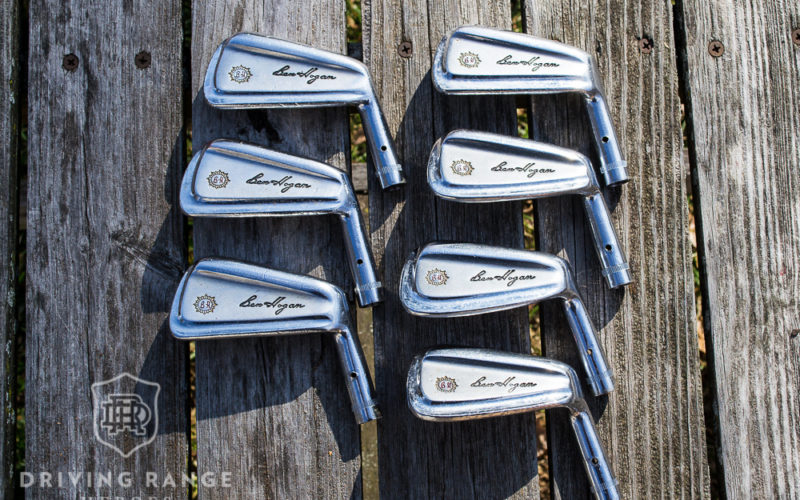

I get a lot of questions on the Apex II line, which is an excellent line. You can tell those are the 1972 as the back stamping has 'Apex' on top. It's tough for me to choose a best one from this decade, but I really like the 1972 Hogan Apex. You should also see some slightly longer shafted irons as well, about +1/4" longer which is about the length of today's standard length muscleback irons. The 70's was an excellent decade of clubmaking for Hogan's company. I really dig most of the Hogan irons from the 60's, but my favorites are probably the Bounce Sole 1+ irons. They also have very sharp leading edges, longer hosels and are about 1/2" shorter than today's irons. But I actually like the way those short irons perform. I am pretty certain that the last line of irons that Hogan personally designed were the 1962 Power Thrusts.Īs I've explained before with the line of Hogan irons from the 60's, you'll find that they look somewhat like today's blades and then from the 8-PW the clubhead becomes very round. I believe that Hogan designed the irons personally until the '63 IPT's cam out. I think the Hogan forgings are excellent and better than most of the other forgings of other OEM clubs outside of probably Mizuno. In Part I, we will look at the Hogan company irons.Īs you may already know, I currently carry a set of 1963 Hogan IPT (Improved Power Thrust) blades that I like quite a bit. Although the forged cavity back design hasn't been around that long, I think for the purposes of trying to improve your swing, motor skills and hand-eye 's best to go with blade style irons. Lastly, I will only be recommending blade, muscle back irons. Almost any other re-chroming process takes some weight off the clubhead. Not only do they do tremendous work (Shawn Clement recommends them as well), but their chroming process is such that they can add weight or take off weight with their re-chroming. I highly recommend the Iron Factory for their work.
I spoke to Jim Kronus at the Iron Factory about the process of re-shafting pinned irons and he said it's quite easy as they just re-shaft like they normally do with modern epoxy and weld the pin hole shut and all he charges is $1 extra per club to do that. Some golfers think that it made Hogan's irons 'special' but the reality is that back then the epoxy was not very good at keeping the shafts in place, so Hogan went a step further and just pinned them so the shafts wouldn't fall out. Back in the 60's and earlier, Hogan company would put a 'pin' in the hosel of the shafts to keep the shafts from falling out. I've also been asked about shafts that were 'pinned' in some vintage irons.

But I would stay away from the aluminum shafts which were prevalent back then because they are very light and have a poor feel to them. You'll probably want to change your shafts if you become serious about using vintage irons outside of practice. Clubfitters are usually averse to bending irons much either way, but the reality is that you can bend the forged irons a ton and not every worry about them snapping.Īlso, check to see what type of shafts are in the vintage irons. Cast irons probably became popular in the mid-80s and most of them had a tremendous amount of offset and you can only bend cast so much. First, I suggest that if you're going after some vintage irons, make sure that they are forged irons. I've received some questions about what type of vintage irons that golfers should go after, so I wanted to put this in a blog so people can refer to it for help.


 0 kommentar(er)
0 kommentar(er)
